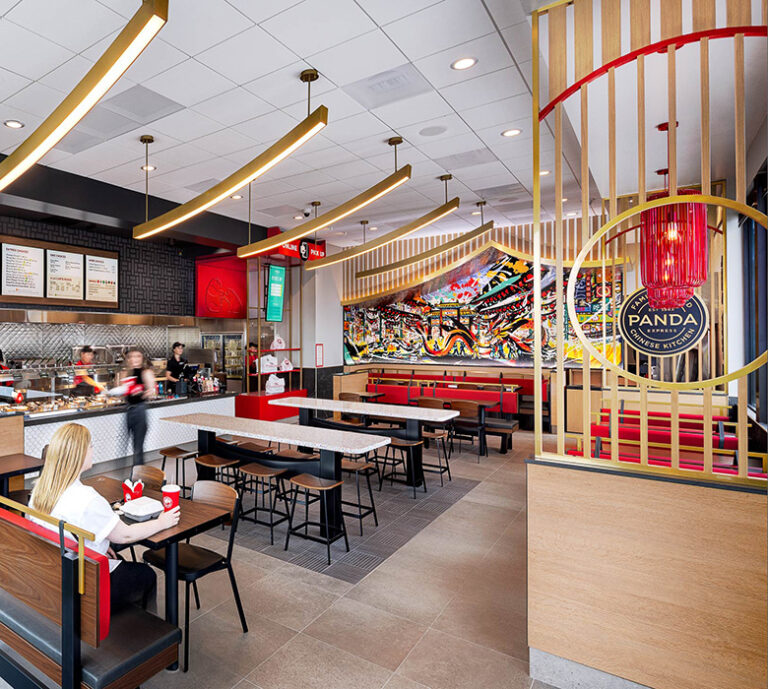Hosted annually by Visual Merchandising + Store Design (VMSD) Magazine, the International Retail Design Conference (IRDC) is an industry event centered around the retail experience and the professionals that champion emerging design practices. This year, several members of the ChangeUp team were in attendance, and over the course of two days we participated in workshops, retail tours, and interactive panel discussions. For anyone not able to make it this year, we’ve summarized a few of our favorite moments and key takeaways from IRDC 2022.
Meet your customers where they are
One of the more memorable talks at IRDC came from Jamie Michael Hemmings and Jilea Hemmings, founders of Nourish + Bloom Market, the first autonomous grocery store with robotic delivery in the United States. They spoke candidly about the future of autonomous retail, and the concerns around how older generations will adapt to the new technology. Jamie and Jilea discussed the importance of meeting your customers where they are and ensuring accessibility not only to tech-savvy generations, but all shoppers. Older generations do not want to get left behind, and adaptation requires taking the time to introduce new concepts. So, when designing with a digital lens, it was still vital to Nourish + Bloom Market to take time to map out how to inform users who might need more support understanding the retail experience—a valuable lesson for all brands as we integrate more new technologies.
To be memorable, you have to be adaptable
Another speaker who touched on the importance of listening to your customers and adaptability, was Jeni Britton of Jeni’s Splendid Ice Creams. She first spoke about her passion for flavors, art, and people—and how it led her to develop her ice cream brand, which now consists of 70+ brick and mortar “scoop shops” located across the US. Jeni reminded the audience of creatives that when designing retail spaces, “it’s not the customers fault if they don’t get it.” It’s crucial to be flexible and okay with pivoting if something clearly isn’t working. Every innovation or change should be thought of as a trial run to confirm what is or isn’t worth implementing throughout your other stores.
Jeni also shared her philosophy around creating memorable guest experiences. She mentioned that her team strives for “all the shops to feel like home” and that they “design the stores to feel imperfect to make them feel local.” This highlighted the power of understanding your markets and creating localized shopping experiences while still maintaining consistency throughout each store. And in terms of consistency, something guests have come to expect at Jeni’s shops, is waiting in line for ice cream for about 20-30 minutes. But Jeni noted that she proudly believes waiting has actually become an imperative part of the brand’s customer journey; it has set the stage for introduction and connection that may not have happened outside of her line.
Automation as a tool for sustainability
Autonomous technology was a recurring theme at IRDC, particularly ensuring retailers consider how these new systems alter the guest experience and therefore change the way stores are designed. When customers are faced with a new process, such as autonomous shopping, brands must provide the education and space to transition into this foreign landscape. While the upfront cost of investing in new tech may seem high, it is undeniable that the long-term strategy is cost effective, providing streamlined labor costs and fewer variables with automated work. But automation alone isn’t the answer. It’s the integration of new tech with the tried and true that allows for a truly great retail experience.
The impact of retail on the world
While the climate crisis is a recurring topic across all industries, retail is at a crucial point in its history. From reconsidering new-build vs. renovation to the environmental impact of materials and building practices, the impact of the retail design industry is massive. So, it was no surprise to us that in a room full of retailers, architects, and designers, this topic was a lightning rod for discussion. The conclusion—sustainability is no longer a best practice—it is standard practice. Read more on how brands should think about incorporating a holistic approach toward sustainable retail design.
Looking at design and technology through the eyes of the customer—to be aware of their perceptions, needs, and wants—is essential to a retailer’s long-term success. The power of the customer has never been more evident, and because of that, retail designers are motivated to be more creative, innovative, and thoughtful in their approach. IRDC 2022 was a great reminder of this, and that the future of retail is an exciting one.
We hope you found these takeaways from IRDC 2022 insightful—and if we didn’t see you this year, we hope to see you in 2023! 👋



